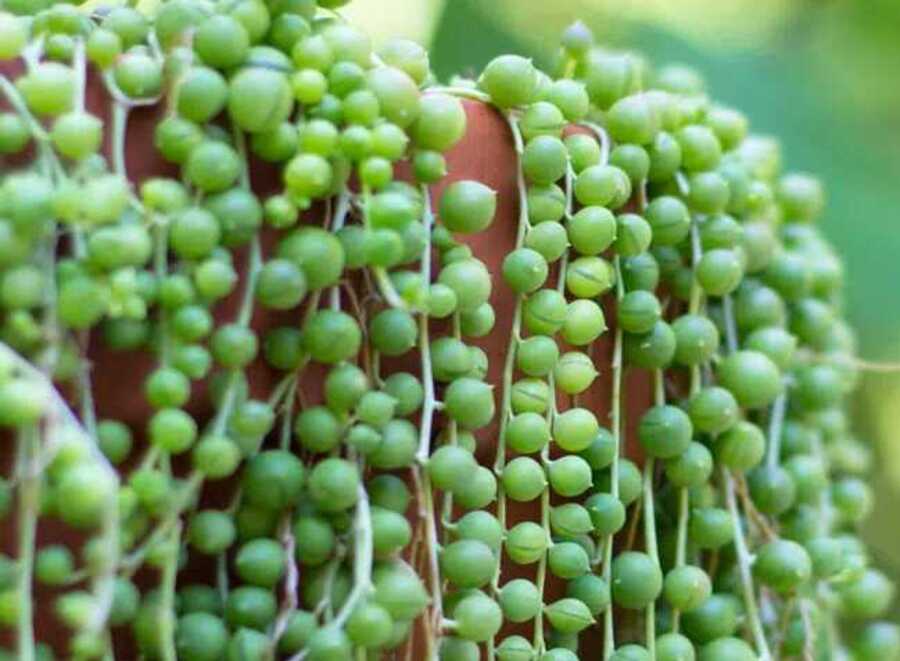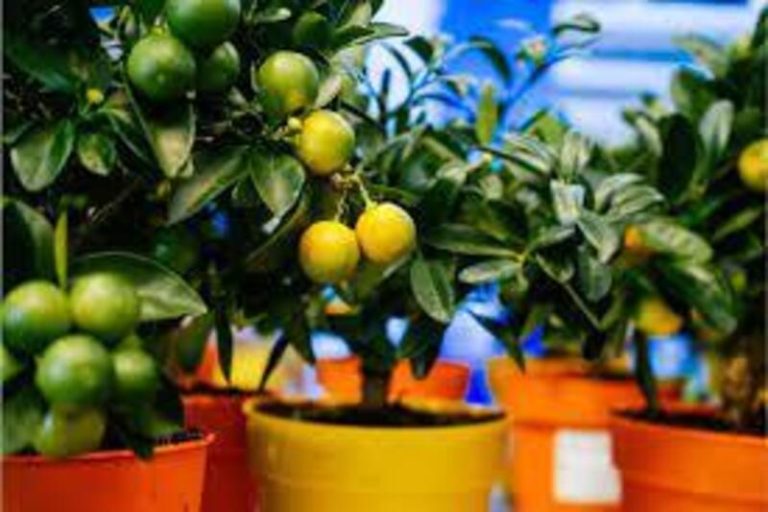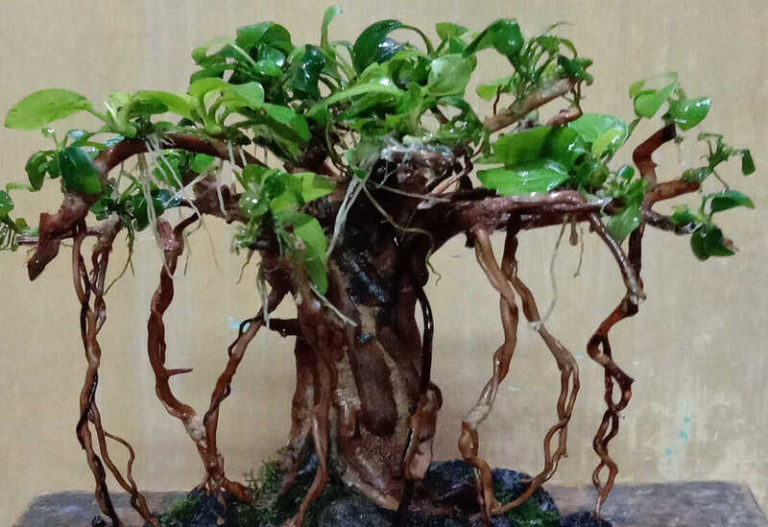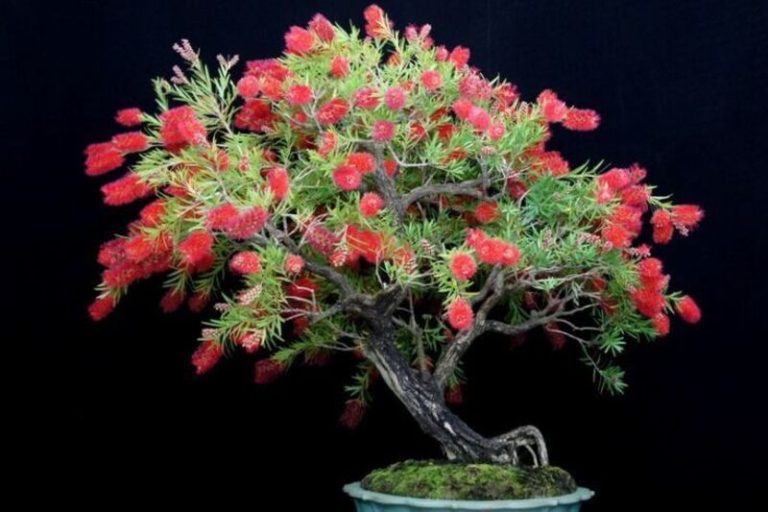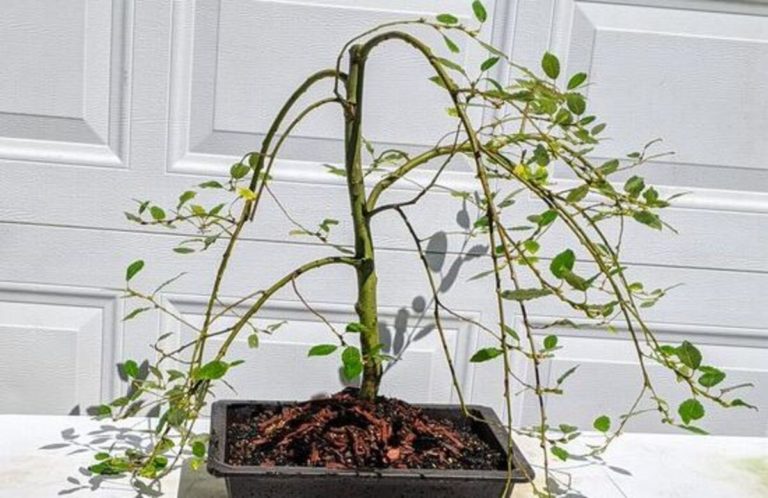Blue Pearl Chlorophytum Bonsai: A Miniature Marvel of Nature
Love plants but don’t have a lot of room? Have you thought about bonsai? Bonsai is a Japanese art form in which small trees or bushes are grown in small pots. They are great for small areas and give your home a bit of natural beauty. The Blue Pearl Chlorophytum Bonsai is a well-known bonsai plant.
What is a Blue Pearl Chlorophytum Bonsai?
The Blue Pearl Chlorophytum Bonsai is a type of bonsai plant in the genus Chlorophytum. It is a rare type of Chlorophytum that grows slowly and has blue-green leaves. The Blue Pearl Chlorophytum Bonsai is a unique and beautiful addition to any home, but it can take several years for it to reach full growth. People who like bonsai and value the beauty and uniqueness of this plant choose it often.
History and Origins of Blue Pearl Chlorophytum Bonsai
Blue Pearl Chlorophytum Bonsai comes from the genus Chlorophytum, which comes from warm and southern Africa and Asia. The Blue Pearl type of Chlorophytum is a relatively new member of the family, and no one knows when it first showed up.
However, it is believed that the Blue Pearl Chlorophytum variety was developed through selective breeding and hybridization of different Chlorophytum species. This process involved crossbreeding different species of Chlorophytum to produce a plant with unique characteristics, such as blue-green foliage.
It can take a long time and a lot of skill and care to breed and crossbreed animals. The Blue Pearl Chlorophytum Bonsai possibly came about through a combination of breeding and growing ways that have been improved over a long time.
The Blue Pearl Chlorophytum Bonsai is a popular choice among bonsai fans who like its unique look and the fact that it grows slowly. It looks great in any house and is sure to start a discussion.
Blue Pearl Chlorophytum Bonsai and Their Symbolism
Bonsai plants are often associated with symbolism in many cultures, including Japanese culture, where the art of bonsai originated. Blue Pearl Chlorophytum Bonsai is no exception, and it has its own symbolic meanings.
In general, bonsai plants are seen as a representation of the beauty and transience of life. They symbolize the importance of patience, discipline, and perseverance in achieving our goals, just as the art of bonsai requires these qualities to cultivate a beautiful and healthy plant.
More specifically, Blue Pearl Chlorophytum Bonsai is believed to represent growth, renewal, and a fresh start. The blue-green foliage is reminiscent of the ocean and the sky, representing calmness and serenity. This symbolism makes Blue Pearl Chlorophytum Bonsai a popular choice for those who are starting a new chapter in their lives or seeking to cultivate a sense of peace and tranquility in their homes.
Bonsai plants are also thought to have a spiritual side because they are seen as a link between nature and people. This link is thought to be important for living a balanced life and feeling good about yourself.
Overall, Blue Pearl Chlorophytum Bonsai is a beautiful and meaningful addition to any home, representing growth, renewal, and a connection to nature.
Characteristics of the Blue Pearl Chlorophytum Bonsai
The Blue Pearl Chlorophytum Bonsai is a unique and beautiful plant with a few features that set it apart from other types of bonsai. Here are a few of its most important features:
Blue-green foliage: The Blue Pearl Chlorophytum Bonsai has blue-green leaves, as its name suggests. This gives it a unique look. The leaves are thin, long, and pointy at the end.
Slow-growing: The Blue Pearl Chlorophytum is a plant. Bonsai is a slow-growing plant, which means it takes a few years to reach its full size. This makes it a great choice for bonsai fans who enjoy the process of growing and shaping a plant over time.
Compact size: Blue Pearl Chlorophytum Bonsai is a small plant that only gets about 20–30 cm (8–12 inches) tall at its tallest. This makes it perfect for homes or offices with limited room.
Easy to care for: The Blue Pearl Chlorophytum Bonsai is relatively easy to care for and does not require a lot of maintenance. It prefers bright, indirect light and moderate watering.
Air-purifying: Like other plants in the Chlorophytum family, the Blue Pearl Chlorophytum Bonsai is a great air-purifying plant that helps remove toxins from the air and makes room air quality better.
Overall, the Blue Pearl Chlorophytum Bonsai is a beautiful and unique bonsai plant that is easy to care for and has several benefits, including air purification. Its slow-growing nature makes it an excellent choice for those who enjoy the process of bonsai cultivation and shaping over time.
Types of Blue Pearl Chlorophytum Bonsai
Blue Pearl Chlorophytum Bonsai is a special type of the Chlorophytum group, so there is only one kind. But there are several types or versions of the Blue Pearl Chlorophytum Bonsai, which may have slightly different traits or looks. These breeds include:
- Blue Hawaii: This cultivar has blue-green foliage and a compact, bushy growth habit. It is a slow-growing plant, reaching a maximum height of about 30 cm (12 inches).
- Blue Wave: This cultivar has a more pronounced blue coloration to its foliage, with a distinctive wavy shape to the leaves.
- Blue Ribbon: This cultivar has blue-green foliage and a more upright growth habit, with the leaves forming a tight rosette shape.
- Blue Mist: This cultivar has blue-green foliage with a misty, frosted appearance.
While the differences between these cultivars may be subtle, each one has its own unique appearance and characteristics that make it a desirable addition to a bonsai collection. The Blue Pearl Chlorophytum Bonsai and its cultivars are all beautiful and fascinating plants that are sure to be conversation starters in any home or garden.
How to Grow a Blue Pearl Chlorophytum Bonsai
Growing a Blue Pearl Chlorophytum Bonsai is a rewarding and enjoyable experience, and with proper care, you can enjoy a beautiful and healthy plant for many years. Here are the steps to growing a Blue Pearl Chlorophytum Bonsai:
Choosing a container: Choose a container that is the right size for your Blue Pearl Chlorophytum Bonsai. It should be shallow and have good drainage to prevent waterlogging.
Soil: Use a mix of dirt that drains well and is good for growing bonsai. It should be a mix of organic and artificial materials like peat moss, perlite, and sand.
Planting: Place the Blue Pearl Chlorophytum Bonsai in the container and fill with the soil mix, making sure to gently firm the soil around the roots. Water thoroughly after planting.
Light: Blue Pearl Chlorophytum Bonsai prefers bright, indirect light. Place it near a window where it can receive adequate sunlight, but avoid direct sunlight, which can scorch the leaves.
Watering: Water the Blue Pearl Chlorophytum Bonsai when the soil is dry to the touch. Avoid overwatering, as this can lead to root rot.
Fertilizing: Fertilize the Blue Pearl Chlorophytum Bonsai once a month during the growing season with a balanced fertilizer.
Pruning: Prune the Blue Pearl Chlorophytum Bonsai regularly to maintain its shape and size. Pinch off any new growth or remove any dead or yellowing leaves.
Repotting: Repot the Blue Pearl Chlorophytum Bonsai every two to three years to refresh the soil and promote healthy growth.
You may develop a beautiful and healthy Blue Pearl Chlorophytum Bonsai that will be a lovely addition to your bonsai collection by following these simple procedures. Remember to be patient and have fun while developing and sculpting your plant over time.
Benefits of Blue Pearl Chlorophytum Bonsai
Blue Pearl Chlorophytum Bonsai not only adds beauty to your home or office, but it also offers several benefits. Here are some of the benefits of having a Blue Pearl Chlorophytum Bonsai:
- Air purifying: Blue Pearl Chlorophytum Bonsai is well-known for its ability to purify the air by removing pollutants like as formaldehyde and benzene. This makes it an excellent complement to any interior environment, particularly those with limited airflow.
- Stress relief: Being around plants, including Blue Pearl Chlorophytum Bonsai, has been shown to reduce stress and improve mood. The act of caring for a plant can also provide a sense of relaxation and mindfulness.
- Aesthetic appeal: The beautiful blue-green foliage of the Blue Pearl Chlorophytum Bonsai adds a unique touch to any room or garden. Its compact size and bushy growth habit make it an ideal choice for a bonsai display.
- Easy to care for: The Blue Pearl Chlorophytum Bonsai is a resilient plant that requires little maintenance, making it an excellent choice for novices. It may flourish both indoors and outdoors if properly cared for.
- Educational: Growing and caring for a Blue Pearl Chlorophytum Bonsai can be an educational experience, teaching children and adults about plant care, horticulture, and the natural world.
Finally, the Blue Pearl Chlorophytum Bonsai provides more than just a pretty sight to look at; it also has many positive effects on your health and well-being. It requires little attention and looks lovely in any room of the house or workplace.
Styling and Design of Blue Pearl Chlorophytum Bonsai
The Blue Pearl Chlorophytum Bonsai is a versatile plant that can be styled and designed in various ways to suit different preferences and aesthetics. Here are some popular styles and designs of the Blue Pearl Chlorophytum Bonsai:
Formal Upright Style: This style features a straight trunk with branches that are evenly spaced and gradually decrease in size as they reach the top of the plant. The Blue Pearl Chlorophytum Bonsai can be trained into this style with regular pruning and wiring.
Informal Upright Style: This style has a curved trunk that gives the impression of a more natural, organic growth pattern. The branches are also unevenly spaced, giving the tree a more dynamic appearance.
Slanting Style: In this style, the trunk of the Blue Pearl Chlorophytum Bonsai is slanted at an angle, giving the impression of a tree that has grown against the wind. This style can be achieved through careful pruning and wiring.
Cascade Style: In this style, the trunk of the Blue Pearl Chlorophytum Bonsai cascades down below the level of the container, giving the impression of a tree growing on the side of a mountain. This style requires careful wiring and support to achieve the desired effect.
Forest Style: In this style, multiple Blue Pearl Chlorophytum Bonsai are planted together in a single container to create the appearance of a small forest. This style can be achieved by selecting plants with similar characteristics and arranging them in a natural-looking composition.
When creating your Blue Pearl Chlorophytum Bonsai, consider how you want the entire thing to look and feel. You may experiment with numerous designs and patterns until you discover one that you like. If you give your Blue Pearl Chlorophytum Bonsai the care and attention it requires, it may become a beautiful and distinctive addition to your bonsai collection.
How to Care for a Blue Pearl Chlorophytum Bonsai
Caring for a Blue Pearl Chlorophytum Bonsai is relatively easy, but it does require some specific conditions to thrive. Here are some tips for caring for your Blue Pearl Chlorophytum Bonsai:
- Watering: Blue Pearl Chlorophytum Bonsai prefer slightly moist soil but can also tolerate dry conditions for short periods. Water your bonsai thoroughly when the soil is dry to the touch. Avoid overwatering, as this can cause root rot.
- Soil: Use a well-draining soil combination that includes organic materials as well as inorganic components like perlite or pumice. This will guarantee proper drainage and avoid waterlogging.
- Light: Blue Pearl Chlorophytum Bonsai prefer bright, indirect light but can also tolerate lower light conditions. Avoid direct sunlight, as this can scorch the leaves.
- Temperature: Blue Pearl Chlorophytum Bonsai prefer temperatures between 60 and 75°F (15 and 24°C). Avoid exposing the plant to extreme temperatures or drafts.
- Fertilizer: Feed your Blue Pearl Chlorophytum Bonsai with a balanced, water-soluble fertilizer every 2-3 weeks during the growing season (spring and summer). Avoid fertilizing during the dormant season (fall and winter).
- Pruning: Regular pruning is essential to maintaining the shape and health of your Blue Pearl Chlorophytum Bonsai. Use sharp pruning shears to trim back any dead or overgrown branches and shape the tree.
- Repotting: Blue Pearl Chlorophytum Bonsai should be repotted every 2-3 years to refresh the soil and prevent the plant from becoming rootbound. Repot your bonsai in the spring, using a slightly larger container and a fresh soil mixture.
With proper care and attention, your Blue Pearl Chlorophytum Bonsai can thrive and become a beautiful addition to your home or office. Remember to monitor the plant regularly for any signs of pests or disease and take action immediately if necessary.
Blue Pearl Chlorophytum Bonsai Care Sheet
| Aspect | Care Tips |
| Watering | Water when the soil is dry to the touch. Avoid overwatering to prevent root rot. |
| Soil | Use a well-draining soil combination that includes both organic and inorganic components. |
| Light | Blue Pearl Chlorophytum Bonsai prefer bright, indirect light but can also tolerate lower light conditions. Avoid direct sunlight. |
| Temperature | Blue Pearl Chlorophytum Bonsai prefer temperatures between 60-75°F (15-24°C). Avoid extreme temperatures or drafts. |
| Fertilizer | Feed every 2-3 weeks with a balanced, water-soluble fertilizer during the growing season. Avoid fertilizing during the dormant season. |
| Pruning | Regular pruning is essential to maintain shape and health. Use sharp pruning shears to trim dead or overgrown branches and to shape the tree. |
| Repotting | Repot every 2-3 years in the spring using a slightly larger container and fresh soil mixture. |
Remember to keep an eye on your Blue Pearl Chlorophytum Bonsai for any signs of pests or disease and take prompt action if necessary. With proper care, your bonsai will thrive and bring beauty and tranquility to your space.
Tips for Maintenance of the Blue Pearl Chlorophytum Bonsai
To keep your Blue Pearl Chlorophytum Bonsai healthy, you should take some preventive measures. Make sure to protect your bonsai from extreme temperatures and direct sunlight. Common issues with Blue Pearl Chlorophytum Bonsai include spider mites and mealybugs, which can be treated with insecticidal soap.
Conclusion
The Blue Pearl Chlorophytum Bonsai is a beautiful addition to any home. It requires some care, but the effort is worth it. With the right pot, soil, watering, fertilizing, pruning, and wiring, your Blue Pearl Chlorophytum Bonsai will thrive. Take some preventive measures and troubleshoot any issues that arise. With proper care, your Blue Pearl Chlorophytum Bonsai will be a stunning and unique addition to your home.
FAQ :
Q: What is a Blue Pearl Chlorophytum Bonsai?
A: Blue Pearl Chlorophytum Bonsai is a miniature version of the spider plant, a popular houseplant that is native to South Africa. The bonsai version of this plant is prized for its compact size and attractive foliage.
Q: How do I care for a Blue Pearl Chlorophytum Bonsai?
A: Blue Pearl Chlorophytum Bonsai requires well-draining soil, bright but indirect light, regular watering, and occasional fertilization. It also benefits from regular pruning to maintain its shape and health.
Q: Can Blue Pearl Chlorophytum Bonsai be grown indoors?
A: Yes, Blue Pearl Chlorophytum Bonsai can be grown indoors, as long as it is provided with adequate light and temperature conditions. It can be a beautiful addition to any home or office space.
Q: What are the benefits of having a Blue Pearl Chlorophytum Bonsai in my home?
A: Blue Pearl Chlorophytum Bonsai is not only aesthetically pleasing, but it also helps purify the air by removing harmful toxins such as formaldehyde and benzene.
Q: How often should I repot my Blue Pearl Chlorophytum Bonsai?
A: Blue Pearl Chlorophytum Bonsai should be repotted every 2-3 years in the spring using a slightly larger container and fresh soil mixture. This helps prevent the plant from becoming root-bound and allows it to continue growing healthily.
Also Read:

